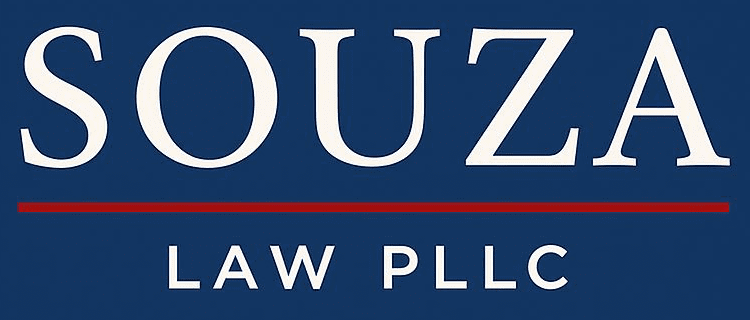2025 I-864 Essentials: Income Thresholds, Joint Sponsors & Public-Charge Pitfalls
Every family-based green-card case—and many employment cases involving relatives—hinges on a rock-solid Form I-864 Affidavit of Support. USCIS uses this contract to ensure the immigrant will not become a public charge. Yet each year thousands of petitions stall because sponsors miscalculate household size, omit assets, or misread the poverty-guideline chart. Below, Souza Law PLLC demystifies 2025 rules so your case sails through without a dreaded Request for Evidence (RFE).
1. Understanding the Sponsor’s Legal Obligation
Signing Form I-864 binds a sponsor until the immigrant:
- Becomes a U.S. citizen,
- Accrues 40 quarters of Social Security work (≈10 years),
- Returns home permanently, or
- Dies.
The obligation survives divorce and can be enforced in state court. We brief sponsors on real-world exposure and suggest insurance or contractual indemnity clauses when appropriate.
2. Poverty Guidelines: 2025 Figures at a Glance
USCIS updated the I-864P chart on March 1, 2025. For the contiguous 48 states, 125 % of the poverty line equals:
- $24,650 for a household of 2
- $31,075 for a household of 3
- Add $6,425 for each additional person
Active-duty military sponsors petitioning for a spouse or child may use 100 % of the poverty line. Alaska and Hawaii have higher thresholds; we cross-check zip codes automatically when drafting petitions.
3. Counting Household Size Correctly
Common mistakes include double-counting dependents who file taxes separately and forgetting K-1 fiancé beneficiaries who have not yet adjusted status. Our intake worksheets map out every person claimed on tax returns and intending immigrants to avoid miscounts.
4. Calculating Income
USCIS prefers line 9 on IRS Form 1040 as the sponsor’s “total income.” If the latest return is unrepresentative (e.g., partial-year employment), sponsors may supplement with:
- Year-to-date pay stubs (at least 6 consecutive),
- Employment-verification letters on letterhead,
- Bank statements showing consistent direct-deposits.
Please note: gig-economy transfers such as PayPal or Cash App must be documented with 1099-Ks or transaction exports, or they risk being discounted.
5. Using Assets to Shore Up Income Gaps
Assets may substitute for income at a 3-to-1 ratio (5-to-1 for spouses of LPRs). Acceptable assets include savings, stocks, and home equity. Vehicles count only if you own at least two cars and one is unencumbered. We prepare professional appraisals and mortgage payoff letters to substantiate equity.
6. Joint Sponsors and Household Members
If the primary sponsor falls short, a joint sponsor with separate income may step in. They need not be related to the immigrant but must be a U.S. citizen or permanent resident.
Alternatively, household members (Form I-864A) can pool income if they live at the same address and can prove it with driver’s licenses or utility bills. We draft clear evidence packets so officers easily trace every dollar back to a W-2 or 1099.
7. Public-Charge Considerations After the 2024 Final Rule
The 2024 DHS rule reinstated a narrower public-charge test but officers still examine:
- Income relative to household size,
- Age, health, and employability of the immigrant,
- Past receipt of cash assistance or long-term institutional care.
Medicaid for emergencies, CHIP, and COVID-19 benefits remain safe. We include a short cover letter highlighting positive factors—stable job offers, private insurance—to pre-empt scrutiny.
8. Digital Filing Tips to Prevent RFEs
Upload searchable PDFs no larger than 15 MB each. Label files “I-864 – 2024 Return – SponsorName” so the officer finds them swiftly. Compression tools sometimes corrupt IRS transcripts; we keep originals under 300 dpi to stay within size limits.
9. How Souza Law PLLC Gets I-864s Approved the First Time
- Custom poverty-line calculator updated every January.
- Automated checklist that flags missing W-2s or mismatched household counts.
- Pre-submission mock RFE review by a former USCIS officer on staff.
- Evidence binders with color dividers when filing by mail for overseas IV cases.
Need help hitting the income target? Request an I-864 review or call (954) 372-7789 to safeguard your green-card timeline.
